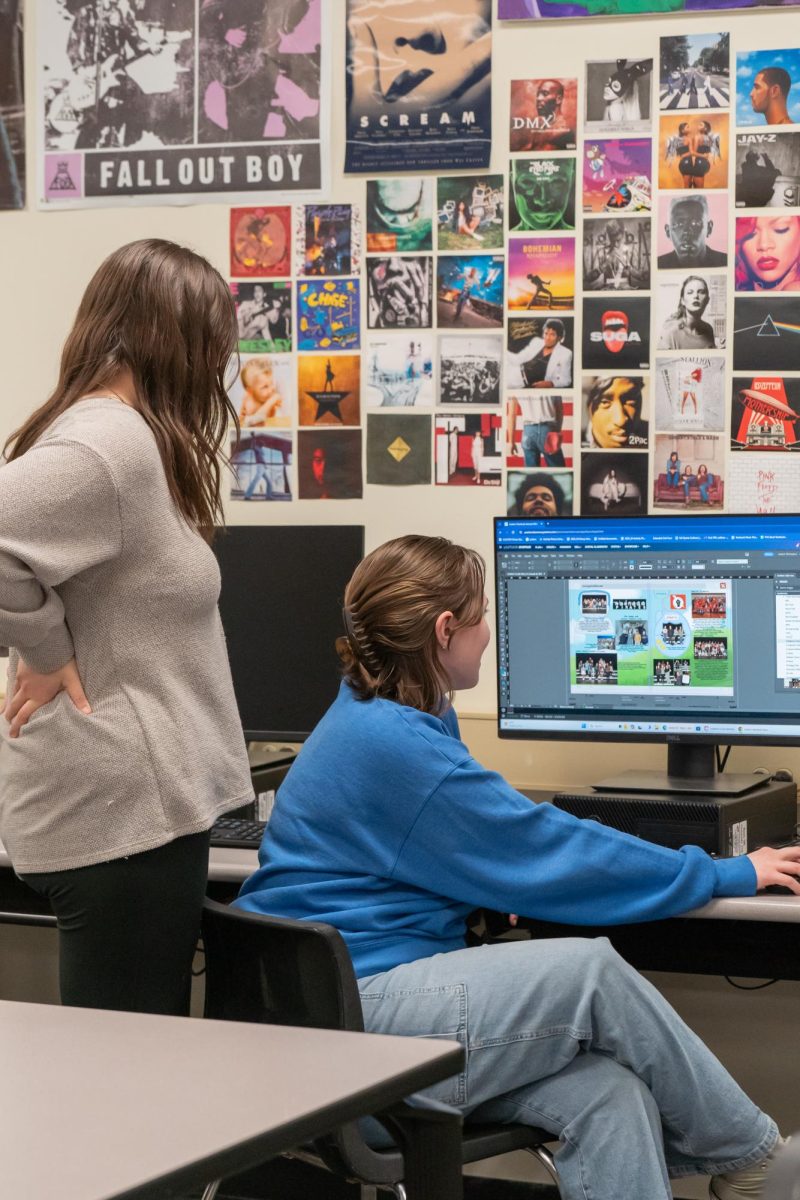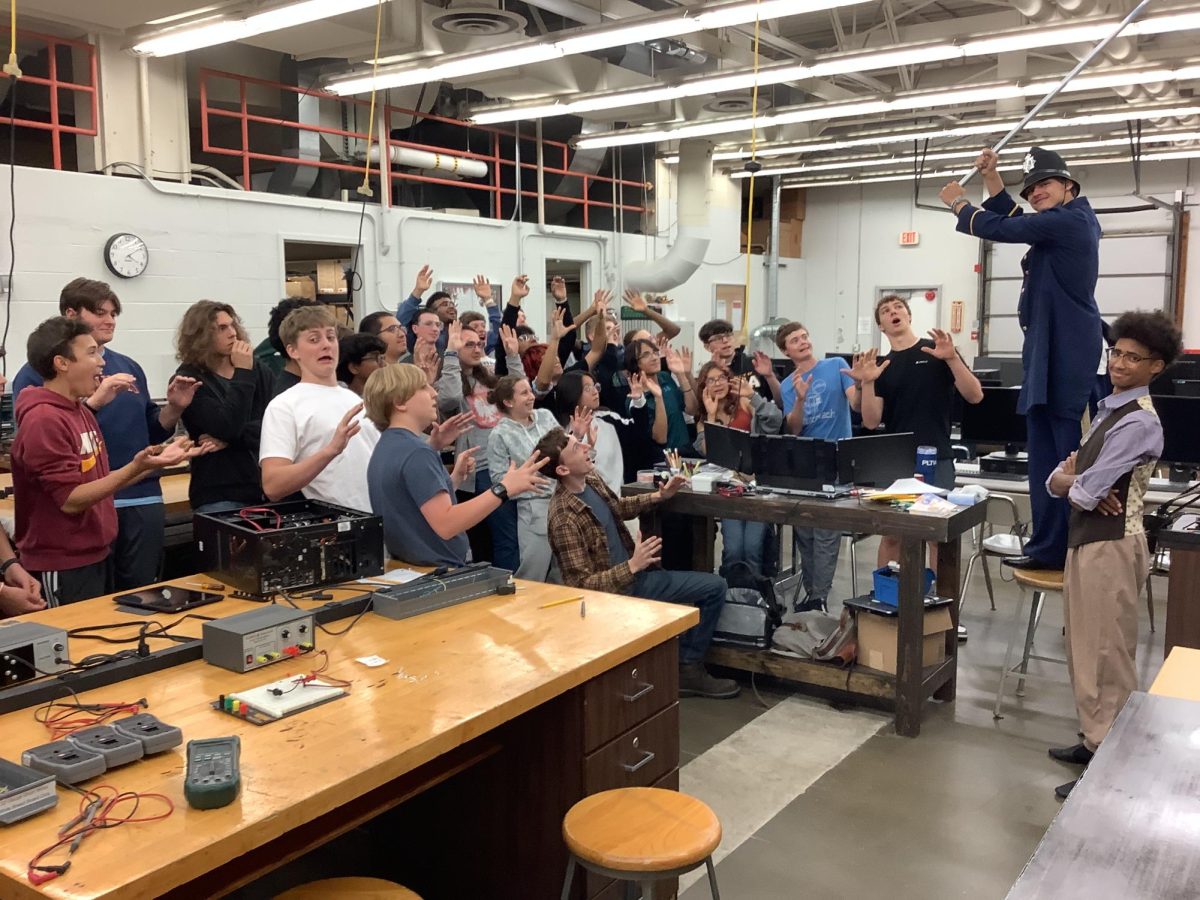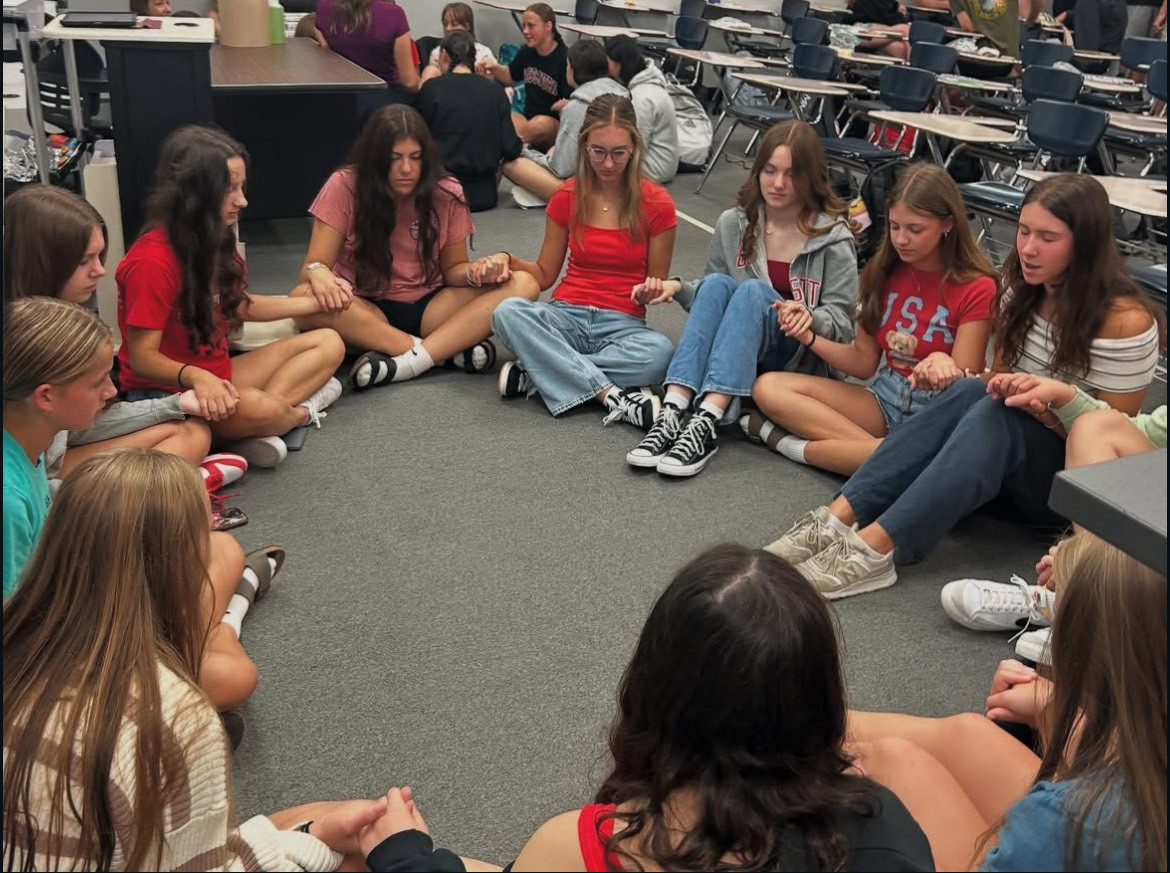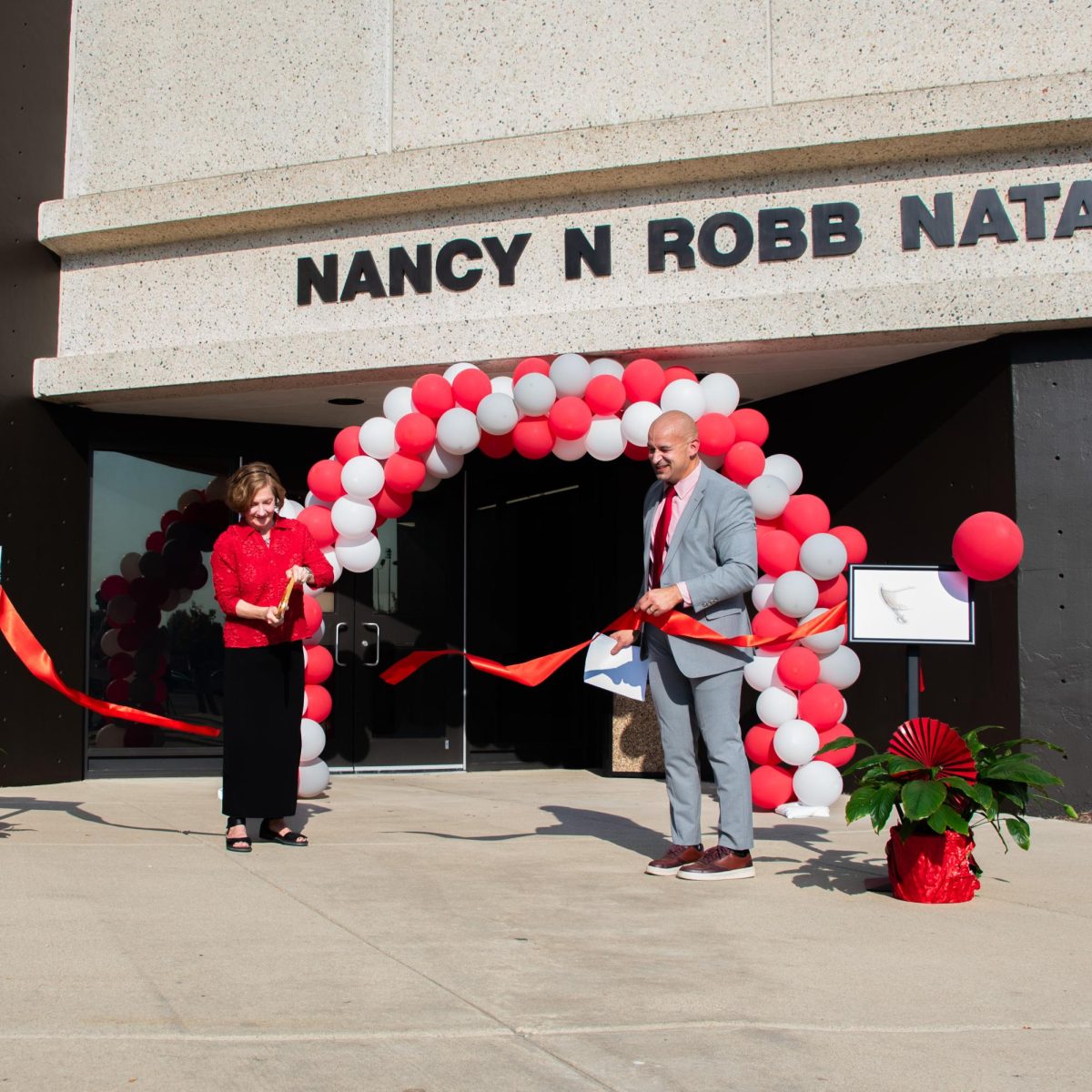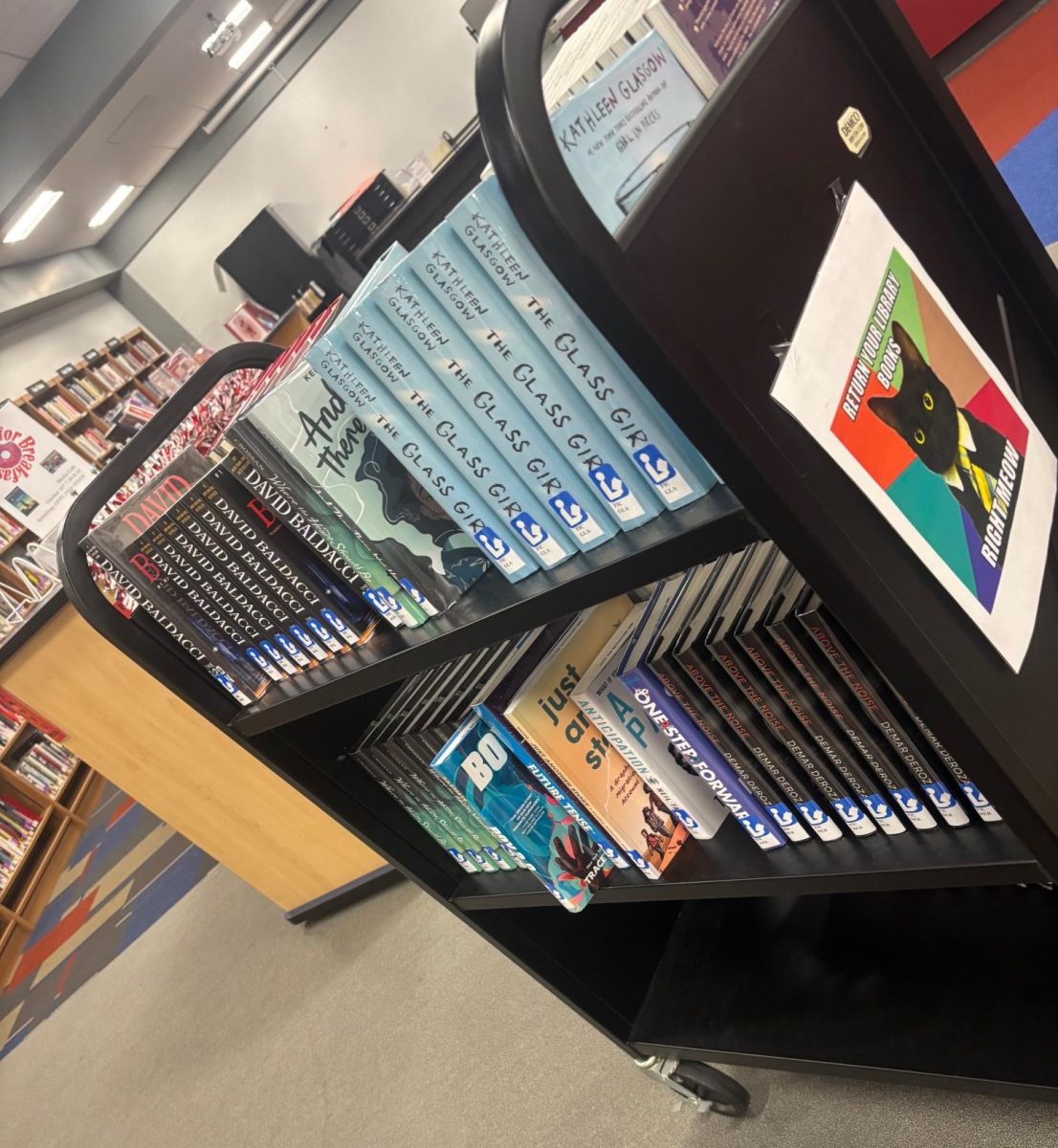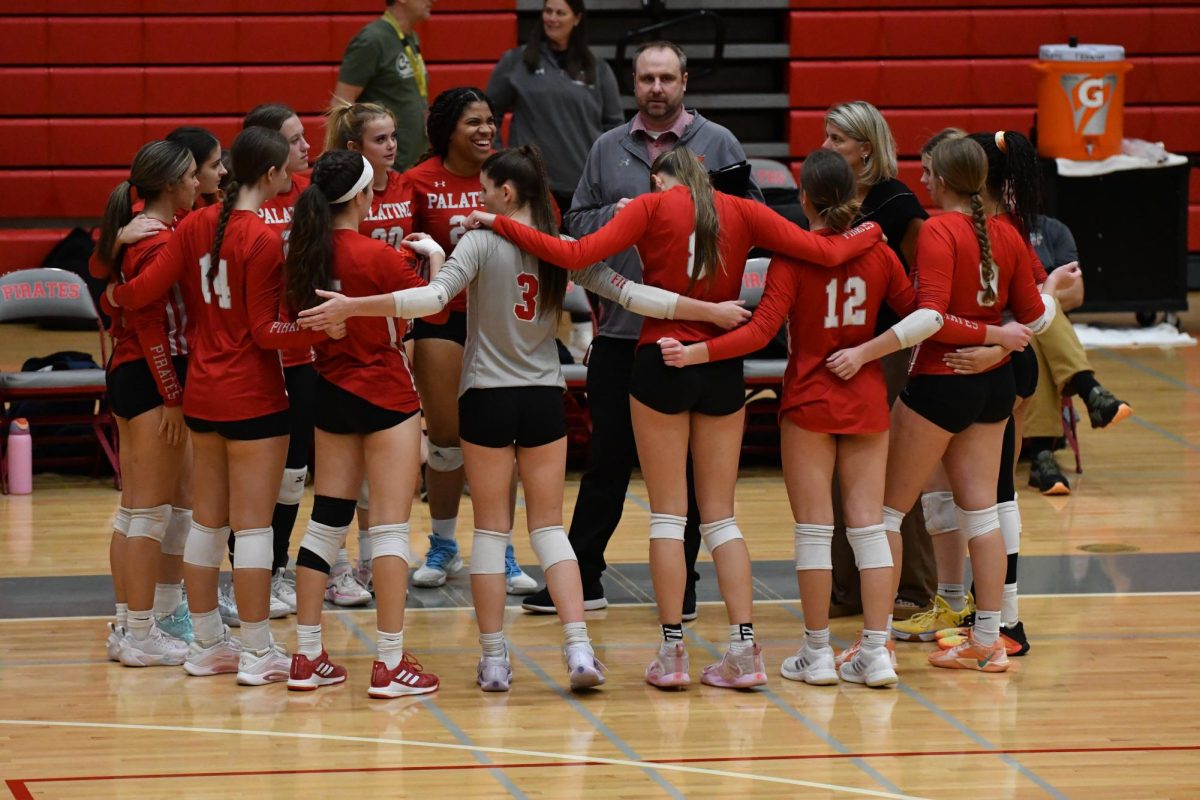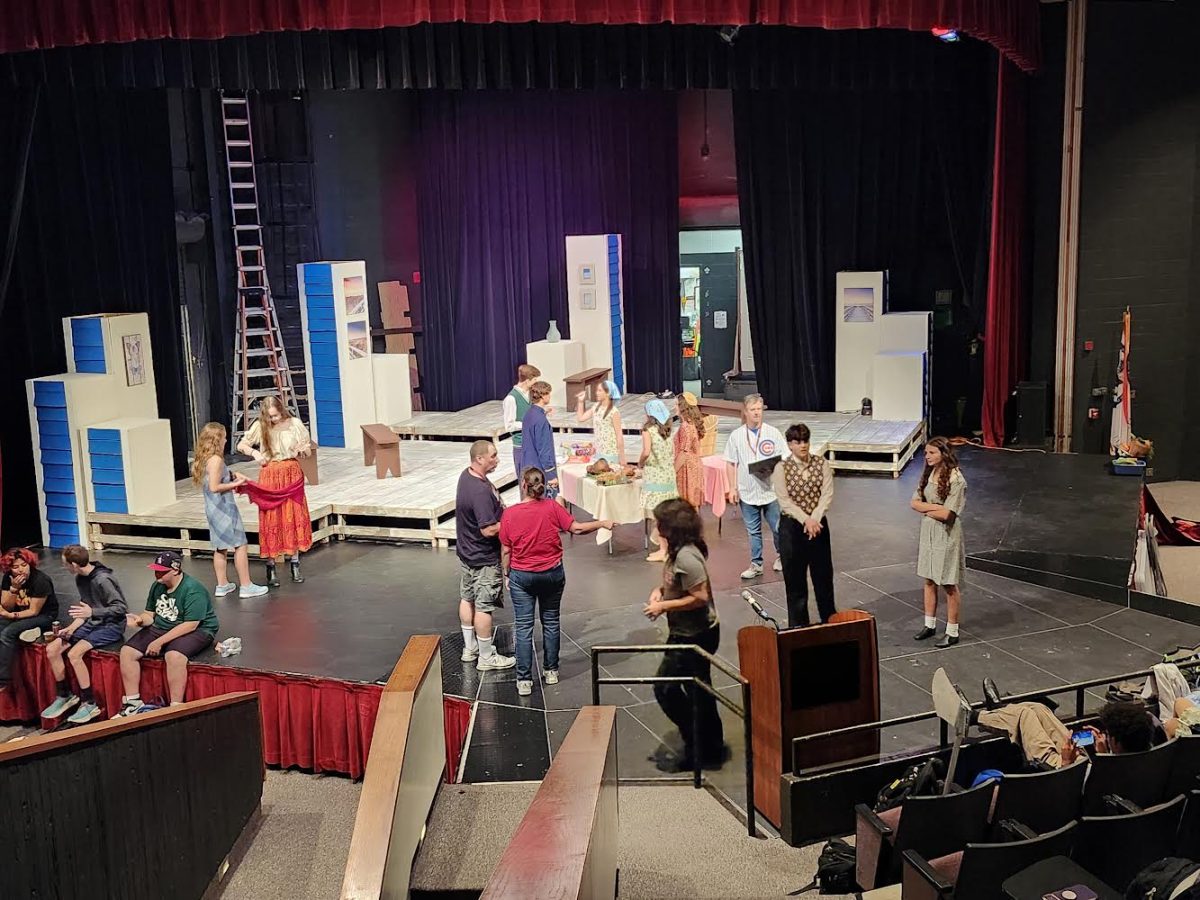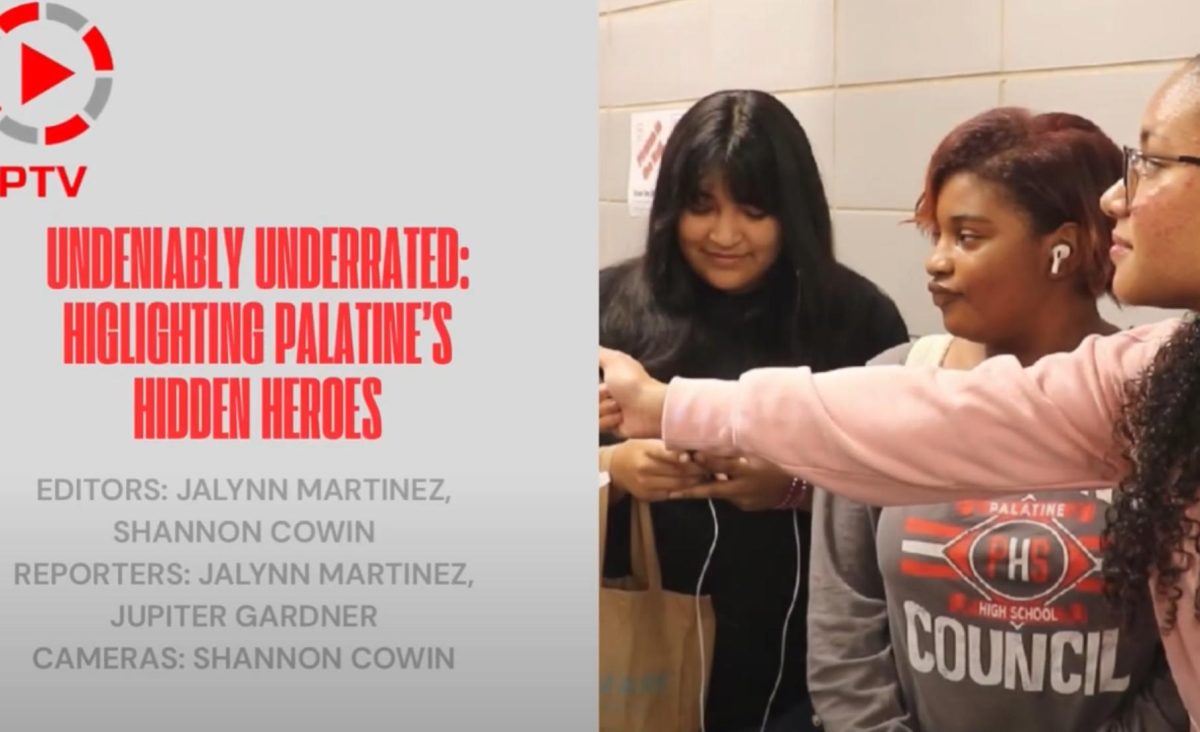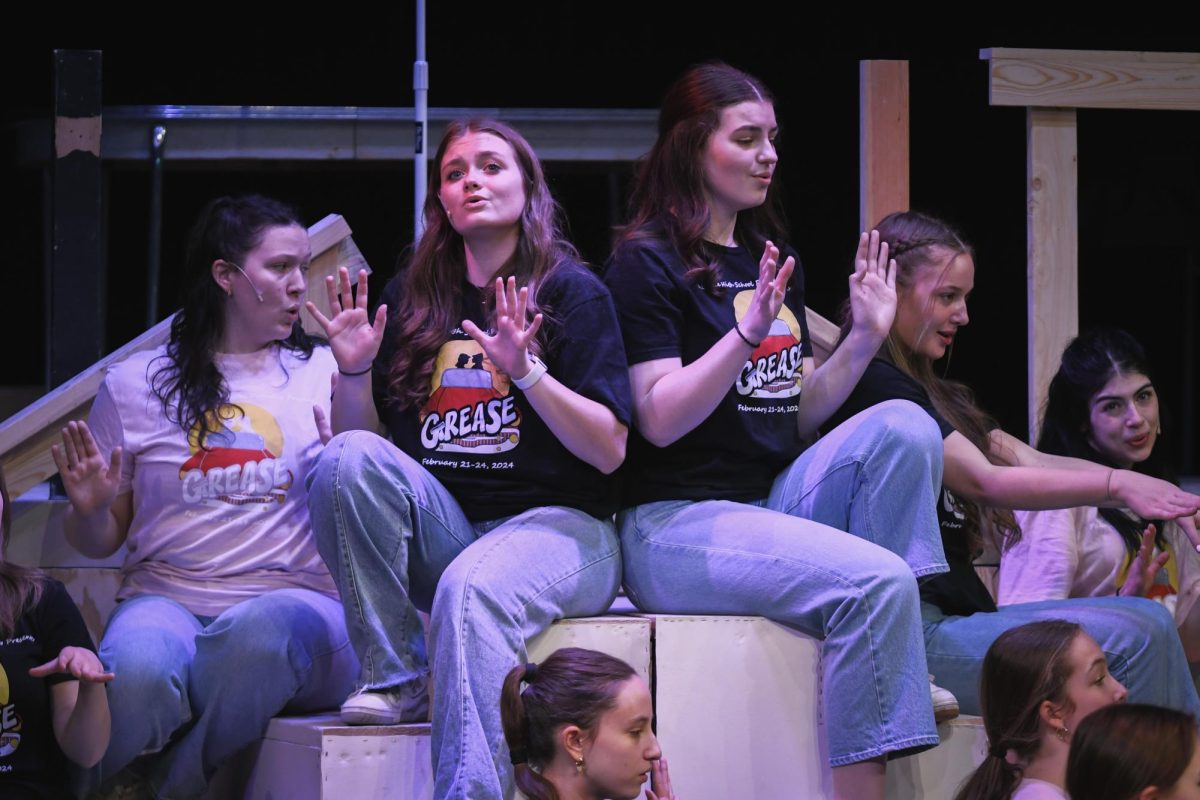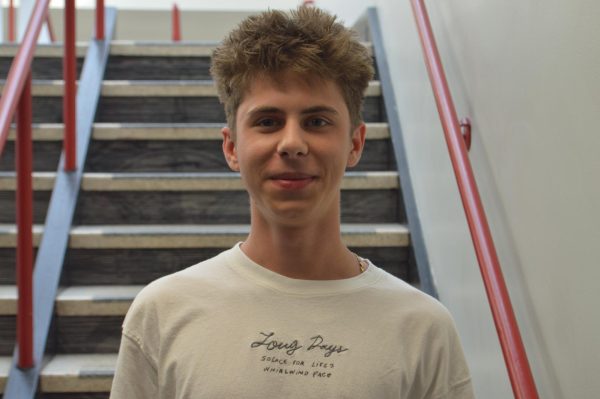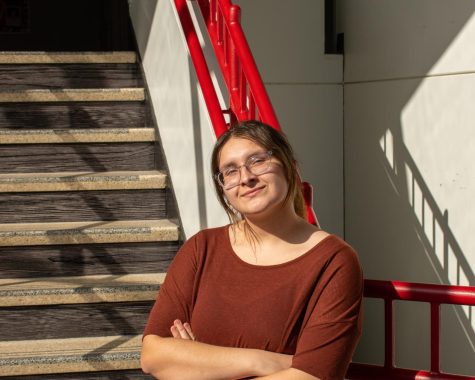The students and staff that are part of the yearbook club collaborate to help create and collect memories and pictures that help reflect the school year. The students that are involved in the yearbook club all hold their own responsibilities on different parts of the yearbook. All together the club all worked hard to put together an entire school year in one book.
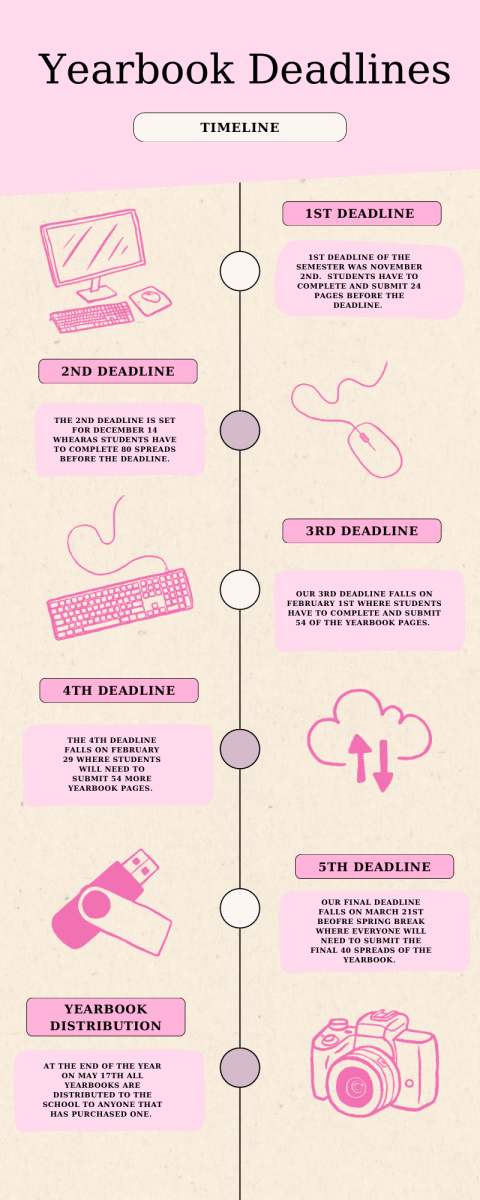
“We have the responsibility of documenting the history of Palatine High School. We have a lot of fun but we also know how to get the job done,” assistant adviser Jennifer Simonini said.
Yearbook club is full of different activities students can do, from designing different elements to photographing pictures of all events and activities that happen at Palatine High School. The students and staff are in charge of creating and designing different pages of the yearbook from all events and activities at Palatine High School. Events such as football games, school dances and many more are all documented in the yearbook.
“We have kids that work on designing the layout spreads which are the pages in the yearbook and then we also have our photographers that do a great job of going out and getting footage and pictures of clubs, sports and any events that are happening in Palatine that we want to include in the yearbook,” Simonini said.
All students are welcome to join and participate, students are able to come in and learn different tools on the computers. From learning how to edit and design to learning how to photoshop and edit different pictures.
“I would argue that our kids that are involved in yearbooks work harder than most clubs in the high school and a lot of them come every single day after school. I can’t think of any other club that does that for the whole year. When they are here I see them dedicating their focus and their energy on whatever it is that they need to do,” Simonini said.

All this work is done by the students who come into the yearbook and help out. Some students choose to stay everyday after school and some normally stay after school two to three times a week.
“As we get closer to deadline days, people start coming in and spending more time on their spreads. When it gets down to days before the deadline they push away distractions and focus more on the spreads,” yearbook sponsor Allen Paul said.
Nonetheless, the students put in a lot of effort and dedication into helping out the yearbook club as much as they can in hopes of creating a memorable yearbook for students to enjoy at the end of the year.
“This is the one club that will stand the test of time. We look at 100 years from now, two years from now, we will be able to to look back at a snapshot of what Palatine High School was like at this year because of the work that our kids are putting in every single day,” Simonini said.
Adding that extra effort
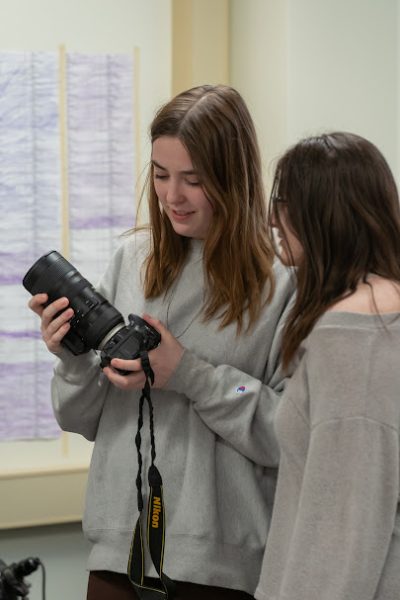
“It may seem challenging and overwhelming to see the work we have to do but once you learn you start to enjoy creating and designing on the computers,” editor Crystal Morales said.
An enormous amount of energy and effort is put into creating every year’s yearbook. Pictures, interviews and designs are all included in putting together collective memories for the yearbook. Students stay after school and work on sports pages and design layouts, and others are photographers for the yearbook.
“There is a lot involved when it comes to designing the yearbook and creating the pages, usually I like to start off designing the layout knowing where the title goes, choosing pictures, getting the correct ways. Honestly, a lot goes on when putting together the page so we all have to be really careful and precise when working,” Morales said.
It takes a lot of learning and effort to learn how to design on a computer. With the yearbook club, a lot of editing is involved and it’s essential to learn how to work a computer and develop a good work ethic to be able to really put in the effort to create the yearbook.

“The greatest challenge is teaching everybody to understand how important it is to meet the deadlines, because the yearbook deadline is different from a school deadline. A school deadline for a paper the teacher can always say ‘I’ll give you extra time’ whereas a yearbook deadline is when you can’t miss it or it costs $2,000,” Paul said.
Joining yearbook club and establishing a set schedule to come in and work on the yearbook spreads is extremely important, it helps students to focus on their designated spreads and really be committed to finishing and completing their work on time.
“It can be a little hard trying to balance your own personal life, school and then top it off with an extracurricular activity,” Morales said. “Especially one that involves a lot of effort, but when you take the risk and join a club you learn to really enjoy it and for me I learned a lot of skills that could probably help me in the future. Yearbook has really taught me to learn how to manage my time wisely and to get what needs to be done on time.”
Students are taught the importance of dedication and time management because of how much energy and effort is put into the yearbook. They are able to show how responsible they are by showing how committed they are to the yearbook club.
“When the book comes out, you realize that you have created something that over 1,000 kids in the school will have for their whole lives. We have a book from 1920, and so long after all the kids died their book and their work is still going to be alive,” Paul said.
Spotlight on Editor-in-Chief: Marissa Parchim

“I’ve been in the yearbook club for three years, starting in my sophomore year. The real test of my design skills was definitely designing the front and back cover for this year’s yearbook. I’ve been in art classes all throughout high school, but having the responsibility of designing something as important as the cover really pushed me to try new things and improve my skills. I also took an art class over the summer in graphic design, so I’ve been applying the concepts and techniques that I learned in that class to the yearbook.”
“In each section, there are different elements that are needed. For example, when creating a sports spread, we need pictures of the featured players, stats from their season, and interviews with the players. For student life spreads, we need many pictures and captions with a good understanding of whatever the spread is showcasing.”
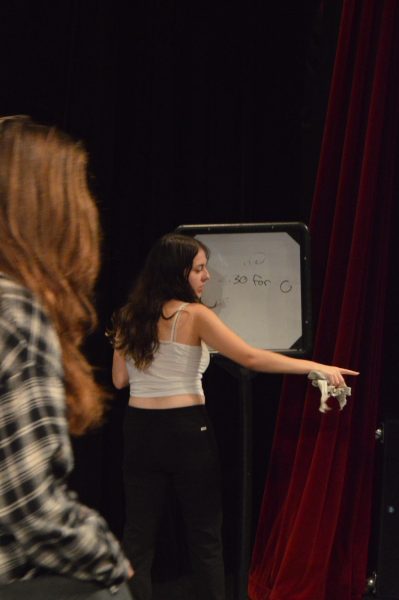
“I think it’s a good idea to have a good work ethic and deal with deadlines. One of the biggest parts of being in the yearbook club is finishing your spreads in time for the deadline, but your responsibilities vary based on the role you have. For example, if your focus is photography, you likely won’t be working on a spread, and you would come in to yearbook in a demand-basis and you and your other photographers would be told what pictures we need for this deadline. Editors face a little more pressure to choose and place pictures as well as write captions. Some editors even design an entire spread from scratch which also takes a lot of time.”
“I think that joining your freshman year is a good idea so you can get a feel for the club and what you would want to do as your role while also having the flexibility and freedom to try other clubs, and see if the yearbook is for you without being completely tied to yearbook responsibilities.”
“By designing spreads for three years, I’ve been able to practice and hone my design and art skills, as well as learn a little more about what publishing design is like. I learned the requirements and guidelines for creating an entire yearbook, and while I likely won’t be doing that again in the future, I think that knowledge can apply to my future work. Also, having to work on a deadline has helped me build habits such as preparing my materials in advance and trying to do at least one thing each day. It taught me the value of staying committed to something you love, since I just started out drawing pictures and now I’m editor-in-chief. I’ve learned to value hard work and staying committed because of where it’s taken me.”



